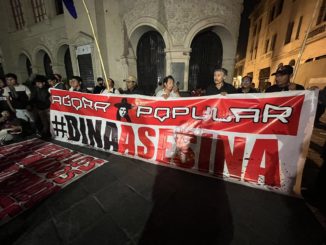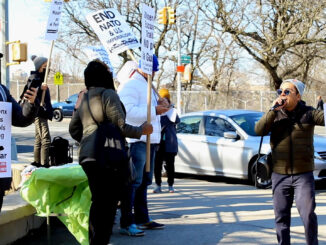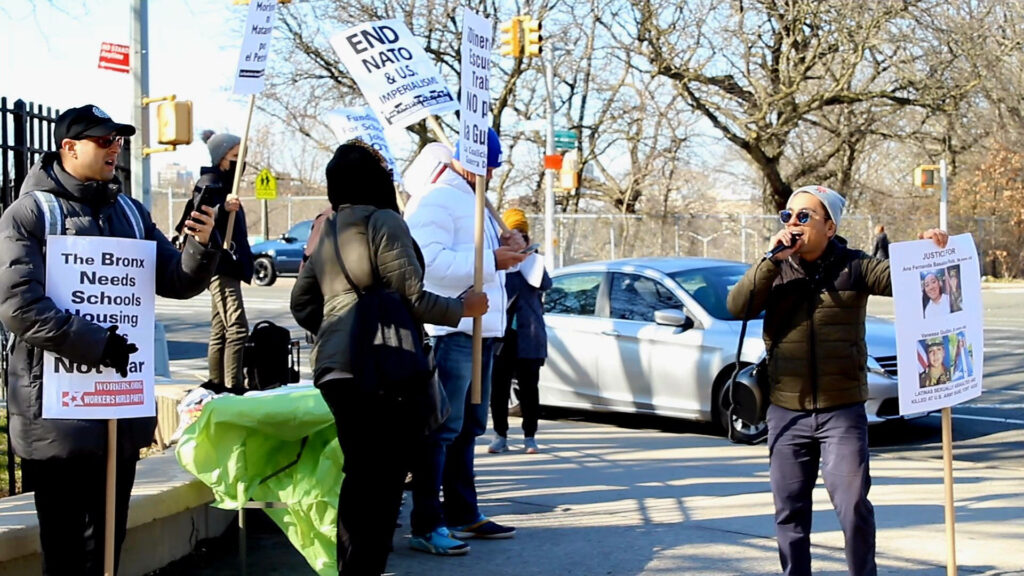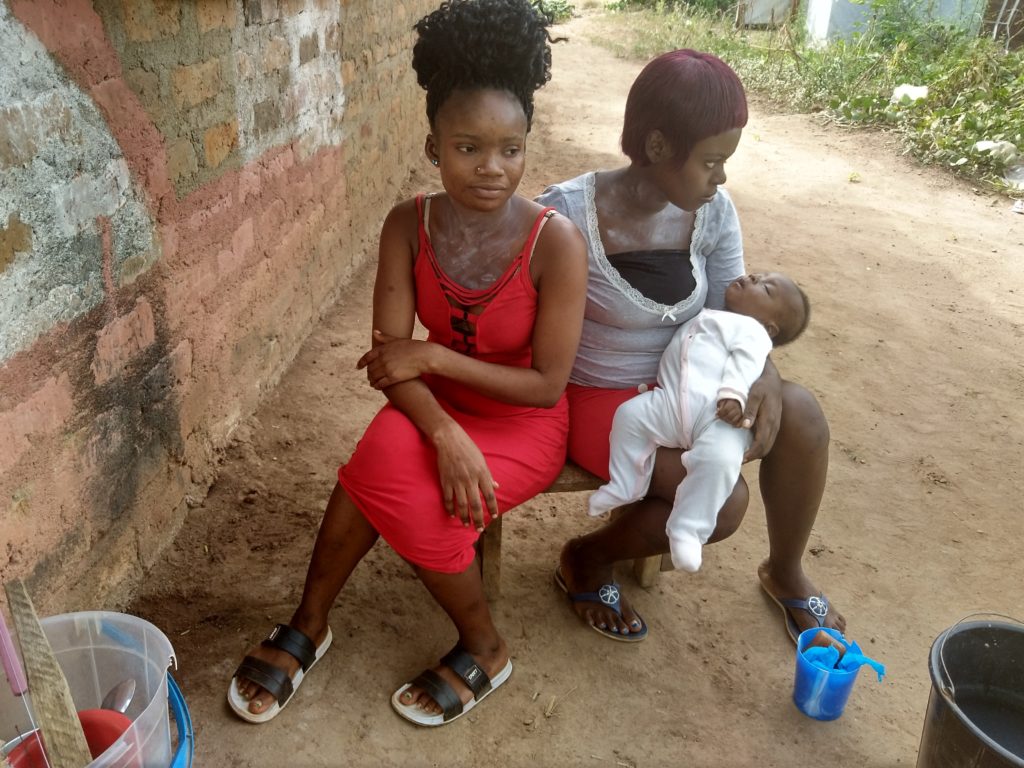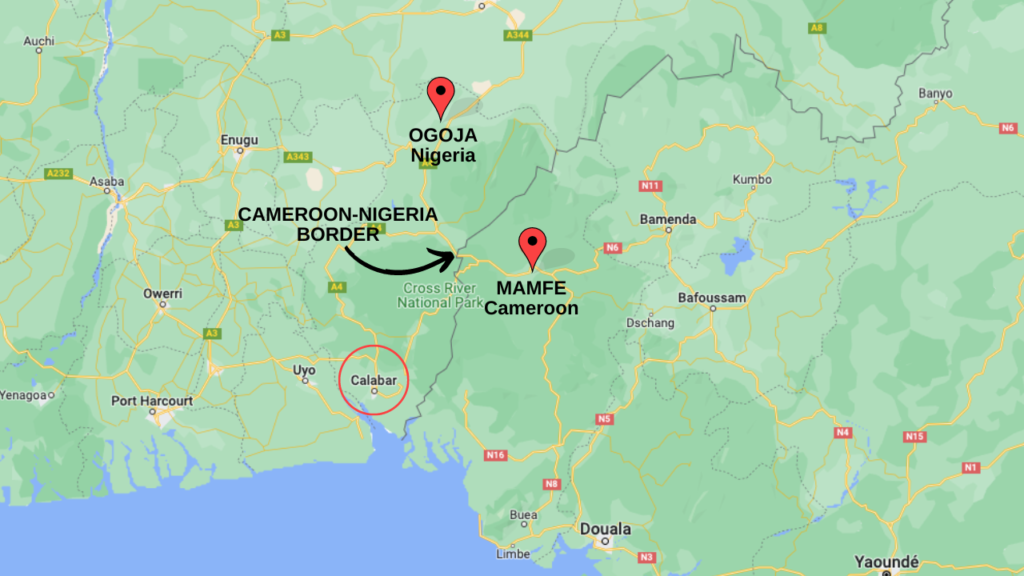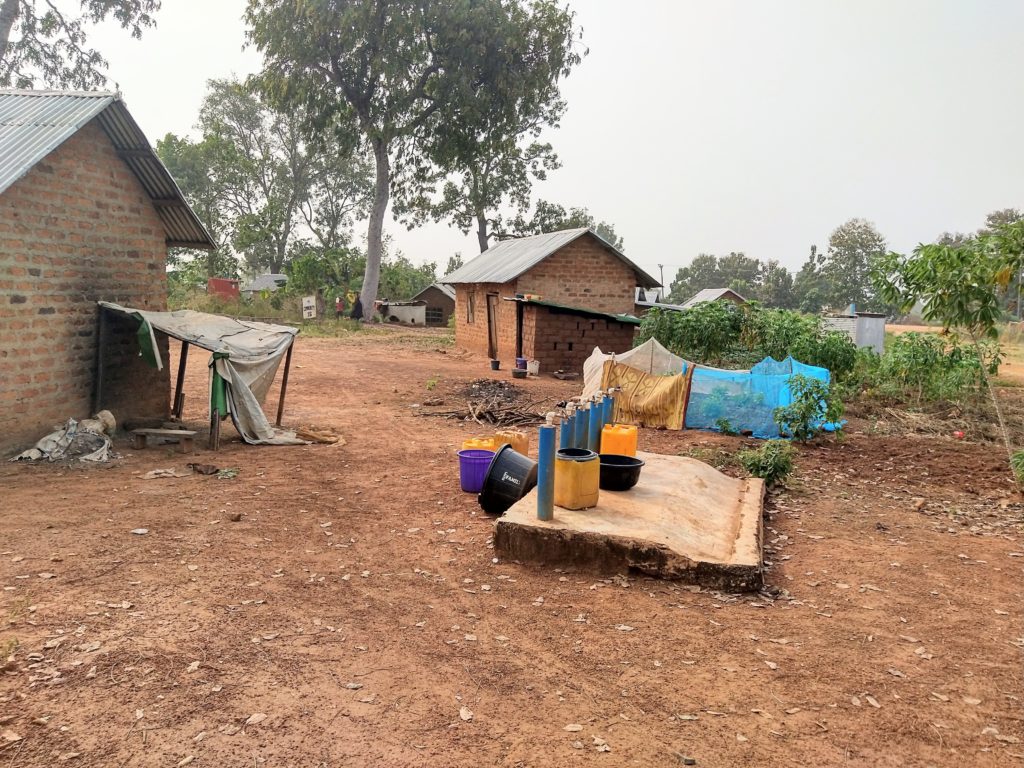Editor’s Note: The following was originally published by the Grayzone.
MAX BLUMENTHAL: Welcome to The Grayzone. It’s Max Blumenthal.
Protests inside Iran triggered by the death of Mahsa Amini, a young woman who was picked up by Iran’s morality police on the grounds of supposed indecent exposure, have drawn massive international attention. Media around the world are following these protests, and on social media the hashtag surrounding Mahsa Amini’s name has generated more attention and retweets than almost any hashtag in Twitter history.
So how much of this international response is authentic? And how much of it is related to genuine concern for Iranian women—and not long-standing Western desire for regime change in Tehran? To better understand this issue, I spoke to a woman inside Iran. Her name is Setareh Sadeghi. She is an independent researcher, a translator, a teacher, and a Ph.D. She lives in the city of Esfahan.
Setareh Sadeghi, let’s talk about you and your own political views before we get into some of the details of these protests and the campaign behind them.
You studied the U.S. Civil Rights Movement as part of your Ph.D., and you’re also a student of propaganda [analysis]. Where do you situate yourself within the Iranian political spectrum, and specifically do you support women protesting the morality police and issues like the hijab?
SETAREH SADEGHI: Well, yes, as you mentioned, I finished my Ph.D. in American Studies, and I studied propaganda analysis as part of my Ph.D. dissertation, and the rhetoric of social movements as well. So, I have always been supportive of the Iranian government as a whole—the notion of an Islamic republic—but I have also been critical towards a lot of the things that happen in my country, like many of the other people who live here.
So, for the issue of hijab, as someone who believes in hijab and has always practiced it, I am totally against the morality police. By the way, in Farsi, the word that we use for it is the “Guidance Patrol,” but in English it’s usually referred to as the morality police, and I’m totally against it. I have been a part of the people, especially women, who took it online and used hashtags to talk about how they do not believe in the morality police even though they believe in hijab. And this is not something new. It has been in place from many years ago, but it’s become more significant this year.
So, even before these protests and before the tragic death of Mahsa Amini, people were talking about it online and I was also one of them, because I saw this was totally unacceptable. And even in my personal life—because I have friends who do not believe in the hijab and they don’t want to practice it, or they practiced it in a way that did not fit the standards of the Islamic Republic’s law of the dress code, and they were stopped by the morality police. In at least three cases that I remember, I would just go talk to the morality police and tell them, as someone who believes in hijab, I am totally against what they’re doing, and this is not the way they should enforce the law. Because it’s not always that they… the morality police don’t always arrest people. Their main job was to go and tell people. But even that, I’m totally against it and I don’t think that’s something that works, mainly because a lot of people who live here believe in some sort of dress code. I think as a woman, I think that’s not something that people should tell us. Like, I believe in law and order, but also, I don’t like being told those details, like how to dress and how to appear in public.
MAX BLUMENTHAL: So, what is the role of the morality police and how much public opposition is there to this unit of the security services? And are they known for being as brutal as they’re currently being portrayed?
SETAREH SADEGHI: Well, yes, they are known as being brutal because Iranian women don’t find it acceptable—not necessarily because everything that they do is brutal, but some harsh treatments are an integral part of the way they enforce the hijab law. But it’s also that, while I think a lot of people are against the morality police, it’s not that everyone is against the mandatory hijab law. So, these are two things that should be studied differently. A lot of people, I mean, there are different surveys, and different surveys in different provinces show a different percentage of people believing in obligatory or mandatory hijab, and I think that’s something that has to be dealt with based on the local culture of each province.
And that is also reflective of how the protests are going on, for example, in my hometown, because it’s considered more conservative and more traditional. The protests there are very much smaller than what you could see in other cities, for example, in Tehran or Rasht or other cities where the protests were significant compared to what is going on in my town. So, yeah, there are also people who believe that the morality police should be in place but the methods that they’re using should be different.
So, I think if you want to categorize women and people who live inside Iran, we have people who are totally against the mandatory hijab. They don’t believe in hijab at all and, obviously, they don’t believe in morality police. We have people who believe in hijab, but they don’t believe in the morality police or the mandatory hijab. We have people who believe in hijab, and they believe in the morality police, but they don’t believe in the methods that they are using. And that also creates a collective of people who are against the morality police but, again, based on how they feel towards it, their participation in these protests is different.
MAX BLUMENTHAL: So, let’s talk about the issue of Mahsa Amini. What do we know about her death? Most people in the West who are following this believe she was beaten to death by the morality police in police custody. Has that been established as the case, and is that the understanding even of the protesters in Iran?
SETAREH SADEGHI: Not really. I mean, even a lot of those Western media outlets corrected their headlines or started using different terms, referring to the case when the CCTV footage of the moment when Mahsa Amini fell and went into a coma was published. So, a lot of people believed that footage, about how some people said that she had bruises on her legs when she was taken to hospital, which shows that there was a beating. But the footage clearly shows that she was in good health conditions when she was there, based on what we see.
An investigation has been ordered. The files all are not yet published. There are talks about it, but there’s not a final statement by the state. The last thing that they have said is that the probe shows that there was no beating involved. They even released the CT scans of her brain and, as I said, there was CCTV footage. So, while there are protesters who believe that the beating happened, there are also a lot of protesters who think that it did not happen. But the fact that a young woman died in police custody only because of violating the dress code is something unacceptable, no matter what exactly happened in police custody.
MAX BLUMENTHAL: You’re in Esfahan, which is a large city in Iran, outside of Tehran. Most of the protests, as far as we know, have been centered in the capital of Tehran, and you have been receiving a wave of death threats for reporting that the protests in your city were very small and that the protests have not spread to key Iranian cities. Is that still the case?
SETAREH SADEGHI: Well, because I have already blocked a lot of people, and because the person who started those threats, as someone who knew me in person, at this point I can say that I haven’t received any new threats. But it was because I appear on different media and I have talked about Iran as a political analyst, I’ve always received insulting or sometimes death threats. But this time it was really unprecedented, as it was started by someone who knew me in person and had my personal information, and even the number of the people who attacked me was really huge.
And it started with the Independence Farsi account on Instagram, publishing a snippet of my interview and disregarding all the criticism that I had against the morality police, the crackdown on everything, and just saying that I lied about the number of the people participating in the protests, or the fact that these protests are much smaller than the ones that we witnessed, for example, in Esfahan in 2019. But at the same time there were a lot of people who were totally against even the Islamic Republic. But I mentioned that, and they verified it and they said that they were part of the protests, and that’s true. It was not significant because, as I said, Esfahan is a conservative and more traditional city, and people take to the streets on different issues. The morality police are, I guess, not the number one issue for people who live here. And I talked to my friends who don’t observe the hijab completely or according to the law, and they said that this is really not their number one issue, and so they don’t want to be part of the protests.
MAX BLUMENTHAL: Right. We’ve seen large protests over the price of food or economic issues in Iran that were totally ignored in Western media. So, what do you make of the response in Western media, not just Western broadcast media but social media as well? The Mahsa Amini hashtag is one of the most popular hashtags in history, as you tweeted. It’s as if there are no other issues in the entire world. Do you think the outrage that we’ve seen on social media is authentic, or something that is being encouraged or pushed by Western—specifically NATO—states, the same way that there was a massive social media amplification campaign around the so-called Arab Spring?
SETAREH SADEGHI: Yeah, that’s true. I mean, social media has never been a true reflection of what’s happening in different societies, especially not Iranian society, because Twitter is blocked here, and a lot of people do not have access to it. So, the number of Iranian users on Twitter is not significant because they use other [platforms]. For example, Instagram. Before these protests Instagram was not blocked, and a very large proportion of the population had Instagram accounts, especially because they also used it for selling products and they had their businesses on it; especially a lot of women run their own business on Instagram. But Twitter is very different and it’s something that is known by Iranians. Even those who are on Twitter, they know that it’s very different from the realities on the ground. And it’s surprising how when there was, especially in those towns where the protests were met, the crackdown on it was really severe and a lot of people couldn’t even use the hashtags, [but then] broke a record, which tells us that there is something that doesn’t come from Iran.
And there is a history of fake hashtags and fake accounts and trolls on Twitter, trying to portray Iran in a different way, and it’s not only about a protest. There are other cases. For example, there was a time when, if you posted anything positive about your life in Iran, you would be attacked by these trolls, because they said that you are normalizing Iranian people’s misery, as if there is no normal life in Iran and the only thing that you are allowed to post online about Iran is just all the problems and the grievances. They attacked a university professor for only posting pictures of him[self] inside a cafe in Tehran, for example.
So, we also have the case of Heshmat Alavi, who apparently is a Twitter user who posts against the Islamic Republic on Twitter. And it’s interesting that when Trump withdrew from the JCPOA [Joint Comprehensive Plan of Action known commonly as the Iran nuclear deal], he mentioned that the JCPOA is facilitating Iran’s crackdown on its people or on certain issues, and two Washington Post journalists asked for a source. And the source that Trump offered was an article written by Heshmat Alavi. And an MEK defector later also talked about how the camp in Albania, the MEK camp in Albania, uses its members to start hashtags and make them a trend, and they’re paid to post about it.
MAX BLUMENTHAL: Just quickly, for those who don’t know, the MEK is the Mojahedin-e-Khalq, which is a U.S.- and Saudi-backed opposition movement, dedicated explicitly to regime change in Iran and replacing it with its cult-like leader, Maryam Rajavi. They have been based in Albania under the watch of the US military and U.S. intelligence, and it’s there that they maintain a troll farm, as you said, to spin out hashtags against the government in Iran. And this account, Heshmat Alavi, apparently was a sock puppet run out of this troll farm.
SETAREH SADEGHI: Yeah, that’s what the investigation shows. And even for the recent hashtag, the historical hashtag trends about Mahsa Amini, a few Iranian users track them and try to find out where those hashtags come from. And then you see a lot of users just posting nonsense, like alphabets and then using the hashtags, and right now I think it surpassed a hundred million times the hashtag words in Farsi and in English, and they come from a limited number of users. I think it’s less than 300,000 users that have been using the hashtags, but it already has the historical trend on Twitter.
And it’s interesting how, as you said, the protests in 2019, because at that time they were also really huge in my neighborhood. And in Esfahan I did not see any reflection of it online, because usually, like that protest was more by the working class and the middle class because it had economic causes, and it affected a larger proportion of the population. So naturally it was bigger, but you wouldn’t hear about it 24/7 on mainstream media or on social media. But this time, it’s a social issue, and it’s a very important issue for women, but at the same time it’s not really as big as the previous protests that we had. But we already have a historical record of hashtags for it, so it totally shows that it’s not reflective of what is actually going on in Iran.
MAX BLUMENTHAL: Well, The New York Times is also reporting that the US State Department and its allies are trying to get communication gear into Iran. However, much of the noise about these protests appears to be coming from the outside. Because of an issue that Westerners can relate to, we’re deluged with identity politics here and we don’t have large economic protests here in the United States anymore, outside of maybe some union activity, some strikes. This is a case of the weaponization of identity, and obviously a real issue, as you point out, a real issue with the morality police may be not at the top of the agenda but something that upsets a section of the population in Iran.
But outside much of the noise is being made by Iranian exiles or expats, and one of the key voices who’s emerged in U.S. media, cable news media, is a figure named Masih Alinejad, who I’m sure you know. She’s been backed by the U.S. government, paid hundreds of thousands of dollars in contracts with the Voice of America, which is the U.S. government’s global broadcasting system. She’s met with former CIA director and Secretary of State Mike Pompeo. Recently she cooked up a phony plot in coordination with the U.S. government and the FBI, claiming that the Venezuelan security services were going to kidnap her and take her on speed boats to Iran. It was one of the most ridiculous plots I’ve ever heard, and it was widely reported in U.S. media. Now she’s back. So, what do you make of Iranian expats kind of taking the mic and becoming the voice of the Iranian public?
SETAREH SADEGHI: Well, I wouldn’t mind. Obviously, Iranian women would be very happy if those in exile really wanted to be a voice for women inside, but the thing is they are just echoing the voice of, I would say, a minority and just a section of the population in Iran that they agree with.
I think they also believe in the Western liberal notion of freedom for women, and not the notion—they don’t really care. I’m not talking about everyone, obviously, but some of these people who are given a voice and whose voices are amplified over the voices of women inside Iran, they’re just repeating the Western notion of freedom for women. And they do not understand that women in Iran can have a different notion of freedom, and [that] they have other priorities when it comes to women’s rights and women’s activism.
And a lot of women here are working towards that. They are organizing, they are using online campaigns to pursue Iranian women’s rights. But these voices from outside really make our struggle more difficult. Instead of, for example, calling for the U.S. government or the EU to lift sanctions on Iran that are hurting ordinary Iranian people and making it more difficult for women to find, for example, job opportunities or to just be an active part of the society, they are calling for their own notion. They’re calling for something that they believe would be liberating for Iranian women, but that’s not necessarily the case for the majority of Iranian women. And I personally find it kind of insulting, because it is like you are disregarding and discrediting Iranian women.
Iranian women inside Iran are very powerful. A large proportion of Iranian women—or the majority of Iranian women, actually it’s a high percentage—go to colleges and they’re highly educated. We have women in business, we have women in medicine and universities, and women are a very active part of the society, so they know how to pursue reforms. For example, there is this case. You can see online that there is civil disobedience happening inside Iran without any hashtags or calls from outside, and it is helping women here. For example, in my town, riding a bicycle for women was not by law forbidden, but culturally there were a group of extra conservative religious people in Esfahan who were against riding bicycles for women, and they were calling for that to happen, they were saying that we’re not going to allow that. Women did not take to Twitter to talk about it. They did not make a fuss about it and start running a protest. What they did instead was, a lot of women, many of them in full hijab and full covering, started riding their bicycles through the city. And now it has become an absolute normal scene in my city, and those conservative groups cannot oppose it anymore. This is how civil disobedience and pursuing reform works. Because a lot of the things we see, for example, that the government is actually imposing or implementing comes from the fact that there is a large proportion of the population that believes in those things.
So, we need education; it’s a progress, it’s a process of reforming and educating women and educating men about women’s rights. It doesn’t happen by a hashtag revolution and just taking to the streets. And then it’s very easy for these protests to get violent, and there are people who abuse it. It starts with slogans for women’s rights, but it ends up with slogans against establishment and calling for the overthrowing of the establishment. So, a lot of women don’t want to be a part of that simply because they see how this is hijacked, how this is exaggerated by Western media and social media as well. And so, they see the realities, and they see those reflections, and they don’t want to be a part of it. But they do their job for seeking reform and educating their family members and being an active part of this process of bringing change to their society.
MAX BLUMENTHAL: So, aside from the Iranian expats who were getting a lot of attention and speaking out on behalf of all Iranians, you have major celebrities sharing the Mahsa Amini hashtag. What do you make of the participation of celebrities, Hollywood stars, and recording artists? And how much do they really know about the situation inside Iran? Are they getting anything wrong?
SETAREH SADEGHI: Well, while I hope a lot of them have the good intention of supporting Iranian women—and it’s only out of ignorance, not that they have been paid or supported by the U.S. government to do that—I think it’s very hypocritical, because they didn’t talk about how sanctions have been hurting Iranian people and Iranian women and taking opportunities away from them. For example, as an academic, like a lot of my colleagues have experienced that their papers, their academic publications are not even considered, only because they come from Iran. That’s also a form of injustice. I mean, that affects only the academia in Iran, but sanctions affect ordinary people. They are really affecting ordinary Iranians and making it impossible, for example, people with cancer to provide their medicines, to find their medicines. A lot of medical companies refuse to sell Iran medicine, citing U.S. sanctions, because there are a lot of European companies who just do not want to stand against the U.S. pressure to abide by these sanctions, so they just refuse to sell medicine. It’s not always directly from those companies; it’s also because of the international sanctions on Iranian banks that make it impossible for Iran to buy those medicines. So, there are a lot of factors involved that are making it impossible. So, I personally—and I’m sure a lot of people—find it really hypocritical.
MAX BLUMENTHAL: Well, you mentioned some violence taking place. We’ve seen police officers be killed and a number of deaths, as well as what appears to be armed clashes on the Iranian-Iraqi border. Are these protests turning violent, and are they being infiltrated by violent elements who actually have very little interest in women’s rights?
SETAREH SADEGHI: Yes, that’s unfortunately the case. Iranian women rightfully wanted to protest and take to the streets and make a statement to the state, which I think they have already made, but there were elements who infiltrated it and started violence, like attacks on public property, even on people’s property. They burned people’s cars, there were shootings, and a lot of people have died in these protests, many of them who were women. And it’s not everyone died because of police shootings or police crackdowns. A lot of those people died because of the thugs and mobs that were involved in these protests. And obviously, like you said, they don’t care about women’s rights. They have another agenda to follow.
And this is also another reason a lot of women who maybe initially were protesting took a line to talk about that, that this is absolutely not what women want, and it’s not supporting women’s rights. But there were also, like I said, peaceful protests going on, and they didn’t receive crackdowns, obviously, because they weren’t as violent. In universities and on different streets where people just were peacefully protesting without burning things down. But with those infiltrations, it became very difficult to keep them peaceful.
And, also, you asked me about the Kurdish environment, right?
MAX BLUMENTHAL: Yeah, Mahsa Amini was Kurdish, and many of the protests have taken place in Kurdish areas, if I’m not incorrect. So, how is the Kurdish issue influencing these protests?
SETAREH SADEGHI: Yeah, well, it appears that one of Mahsa Amini’s cousins was a member of one of these Kurdish separatist movements which have also carried out terrorist acts, but obviously she had nothing to do with these people. But this cousin abused or exploited his relation[ship] with Mahsa Amini, to say that this was to [be] portrayed as an ethnic issue. But Mahsa’s family, including her uncle, spoke out and said that ‘This has nothing to do with our ethnicity. We are Kurdish, but this is about Iran and women’s rights. It has nothing to do with our ethnicity. This involves everyone.’
But different leaders of Kurdish movements inside Iran and outside, like the ones in Iraqi Kurdistan as well, started saying that they were planning for the protests, and they called for people to take to the streets. And even the slogan that has become popular for this movement, which is translated into “Women, Life, Liberty,” that’s a popular Kurdish slogan. And it’s beautiful and people relate to it, but even the slogan came from these Kurdish ethnic groups that were involved, and by now one of the cities at the border witnessed attacks on police stations by some of these Kurdish elements. And Iran started—because they were funded and armed from outside Iran, from Iraqi Kurdistan—Iran also started attacking their bases in Iraq. And just recently, just yesterday, a lot of people, at least, I think about 11 people died in these attacks. But the IRGC [Islamic Revolutionary Guard Corps] has made it clear that they won’t stop until they just back down.
And I think it’s also important to know that I have Kurdish family members and they do not see themselves a part of it at all. So, it’s not about the ethnicity. It’s about a group funded by outside sources wanting to exploit these protests and break a rock on Iran and the society.
MAX BLUMENTHAL: Well, those Kurdish separatists on the Iraqi side of the border are part of the Barzani clan, right? Which has been historically backed by the U.S. and armed by the U.S.
SETAREH SADEGHI: Yeah, and Mossad at some time. Yeah, that’s true.
MAX BLUMENTHAL: And the Israeli Mossad.
SETAREH SADEGHI: Yeah, that’s why. And Iranian people have a really bitter memory of their activities in Iran. They have killed a lot of people within the Kurdish region. And they have been given a platform by, for example, BBC Persian and other propaganda by the British government and the U.S. government, which, again, doesn’t resonate with what’s going on in Iran and makes a lot of Iranians angry, because it’s really not about ethnicity at all. I mean, Mahsa Amini’s family made it very clear that they consider themselves Iranian before anything and it’s really not about ethnicity. But these people are totally disregarding that. They don’t care about the hair case or the case of women; they’re just exploiting it to create chaos inside Iran and make it very difficult for Iranian people to take part in those protests because they can be easily exploited.
MAX BLUMENTHAL: And we saw rather small protests in Cuba in 2021 backed by the U.S., staged by people who’d been involved in US embassy programs, be exploited by the Biden administration to justify not returning to the normalization deal that the Obama administration had hashed out with the Cuban government. Do you think these protests will have a similar effect, and will provide the Biden administration with justification for not returning to the JCPOA Iran deal that the Obama administration and the Iranian government agreed to?
SETAREH SADEGHI: Absolutely. And not only that, I think it gives more justification for the US government to impose even more sanctions on Iranian people, which, as I said, and the UN also acknowledges that the unilateral coercive measures by the United States are hurting ordinary people in Iran, especially women. I mean, they’re taking a lot of opportunities away from women. So, yeah, that’s why this is another reason for me, for example, and a lot of people in Iran and a lot of women inside Iran, that if these protests are going to lead to more sanctions, which seems to be the case already, they don’t want to be a part of this.
MAX BLUMENTHAL: And do you think that these protests and the attendant violence could prove destabilizing to Iran’s internal security or expand in any way?
SETAREH SADEGHI: Well, by now the protests are almost finished and everyone is talking about how there are no longer massive protests. And even on outlets, especially Persian-speaking TV, for example, like BBC or Manoto or VOA Persian, they tried hard to say that the protests are still going on. And I was checking the hashtags today and there are still millions of hashtags for what’s going on in Iran, but if you go on the streets and just walk around, even in Tehran by now there’s really nothing significant happening. In Esfahan it’s almost over. It’s very insignificant, and that’s something that you will hear from a lot of people who live here, and actually in certain neighborhoods, if you walk you would never see anything. I had a friend of my family saying that if a tourist comes to Iran at this time and they go walk around Esfahan, they will believe that whatever they heard on social media or mainstream media was absolutely fake. That’s how normal life is just going on in Iran, and things are gradually going back to normal. Even the Internet crackdown eased today, and that’s why I’ve been able to do this interview.
MAX BLUMENTHAL: Well, looks like at this point the medium is the message. Setareh Sadeghi, thanks so much for joining us at The Grayzone and keeping us informed.
SETAREH SADEGHI: Thank you for having me and giving me a platform, as someone who lives in Iran, to have a voice.

